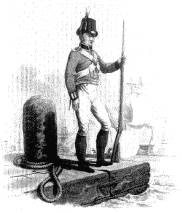The Old Merchant Marine
by Ralph D. Paine

Bibliographical Note
As a rule, American historians like McMaster, Adams, and Rhodes give too little space to the maritime achievements of the nation. The gap has been partially filled by the following special works:
Winthrop L. Marvin, “The American Merchant Marine: Its History and Romance from 1620 to 1902” (1902). This is the most nearly complete volume of its kind by an author who knows the subject and handles it with accuracy.
John R. Spears, “The Story of the American Merchant Marine" (1910), “The American Slave Trade” (1901), “The Story of the New England Whalers” (1908). Mr. Spears has sought original sources for much of his material and his books are worth reading, particularly his history of the slave-trade.
Ralph D. Paine, “The Ships and Sailors of Old Salem: The Record of a Brilliant Era of American Achievement” (1912). A history of the most famous seaport of the Atlantic coast, drawn from log-books and other manuscript collections. “The Book of Buried Treasure: Being a True History of the Gold, Jewels, and Plate of Pirates, Galleons, etc.” (1911). Several chapters have to do with certain picturesque pirates and seamen of the colonies.
Edgar S. Maclay, “A History of American Privateers” (1899). The only book of its kind, and indispensable to those who wish to learn the story of Yankee ships and sailors.
J. R. Hutchinson, “The Press Gang Afloat and Ashore” (1914). This recent volume, written from an English point of view, illuminates the system of conscription which caused the War of 1812.
Nothing can take the place, however, of the narratives of those master mariners who made the old merchant marine famous:
Richard Henry Dana, Jr., “Two Years Before the Mast” (1840). The latest edition, handsomely illustrated, (1915). The classic narrative of American forecastle life in the sailing-ship era.
Captain Richard Cleveland, “Narrative of Voyages and Commercial Enterprises” (1842). This is one of the fascinating autobiographies of the old school of shipmasters who had the gift of writing.
Captain Amasa Delano, “Narrative of Voyages and Travels” (1817). Another of the rare human documents of blue water. It describes the most adventurous period of activity, a century ago.
Captain Arthur H. Clark, “The Clipper Ship Era” (1910). A thrilling, spray-swept, true story. Far and away the best account of the clipper, by a man who was an officer of one in his youth.
Robert Bennet Forbes, “Notes on Ships of the Past” (1888). Random facts and memories of a famous Boston ship-owner. It is valuable for its records of noteworthy passages.
Captain John D. Whidden, “Ocean Life in the Old Sailing Ship Days” (1908). The entertaining reminiscences of a veteran shipmaster.
Captain A. W. Nelson, “Yankee Swanson: Chapters from a Life at Sea” (1913). Another of the true romances, recommended for a lively sense of humor and a faithful portrayal of life aboard a windjammer.
There are many other personal narratives, some of them privately printed and very old, which may be found in the libraries. Typical of them is “A Journal of the Travels and Sufferings of Daniel Saunders” (1794), in which a young sailor relates his adventures after shipwreck on the coast of Arabia.
Among general works the following are valuable:
J. Grey Jewell, “Among Our Sailors” (1874). A plea for more humane treatment of American seamen, with many instances on shocking brutalities as reported to the author, who was a United States Consul.
E. Keble Chatterton, “Sailing Ships: The Story of their Development” (1909). An elaborate history of the development of the sailing vessel from the earliest times to the modern steel clipper.
W. S. Lindsay, “History of Merchant Shipping and Ancient Commerce,” 4 vols. (1874-76). An English work, notably fair to the American marine, and considered authoritative.
Douglas Owen, “Ocean Trade and Shipping” (1914). An English economist explains the machinery of maritime trade and commerce.
William Wood, “All Afloat.” In “The Chronicles of Canada Series." Glasgow, Brook and Co., Toronto, 1914.
J. B. McMaster, “The Life and Times of Stephen Girard, Mariner and Merchant,” 2 vols. (1918).
The relation of governmental policy to the merchant marine is discussed by various writers:
David A. Wells, “Our Merchant Marine: How It Rose, Increased, Became Great, Declined, and Decayed” (1882). A political treatise in defense of a protective policy.
William A. Bates, “American Marine: The Shipping Question in History and Politics” (1892); “American Navigation: The Political History of Its Rise and Ruin” (1902). These works are statistical and highly technical, partly compiled from governmental reports, and are also frankly controversial.
Henry Hall, “American Navigation, With Some Account of the Causes of Its Former Prosperity and Present Decline” (1878).
Charles S. Hill, “History of American Shipping: Its Prestige, Decline, and Prospect” (1883).
J. D. J. Kelley, “The Question of Ships: The Navy and the Merchant Marine” (1884).
Arthur J. Maginnis, “The Atlantic Ferry: Its Ships, Men, and Working” (1900).
A vast amount of information is to be found in the Congressional Report of the Merchant Marine Commission, published in three volumes (1905).
![[Buy at Amazon]](http://images.amazon.com/images/P/0911548351.01.MZZZZZZZ.jpg)